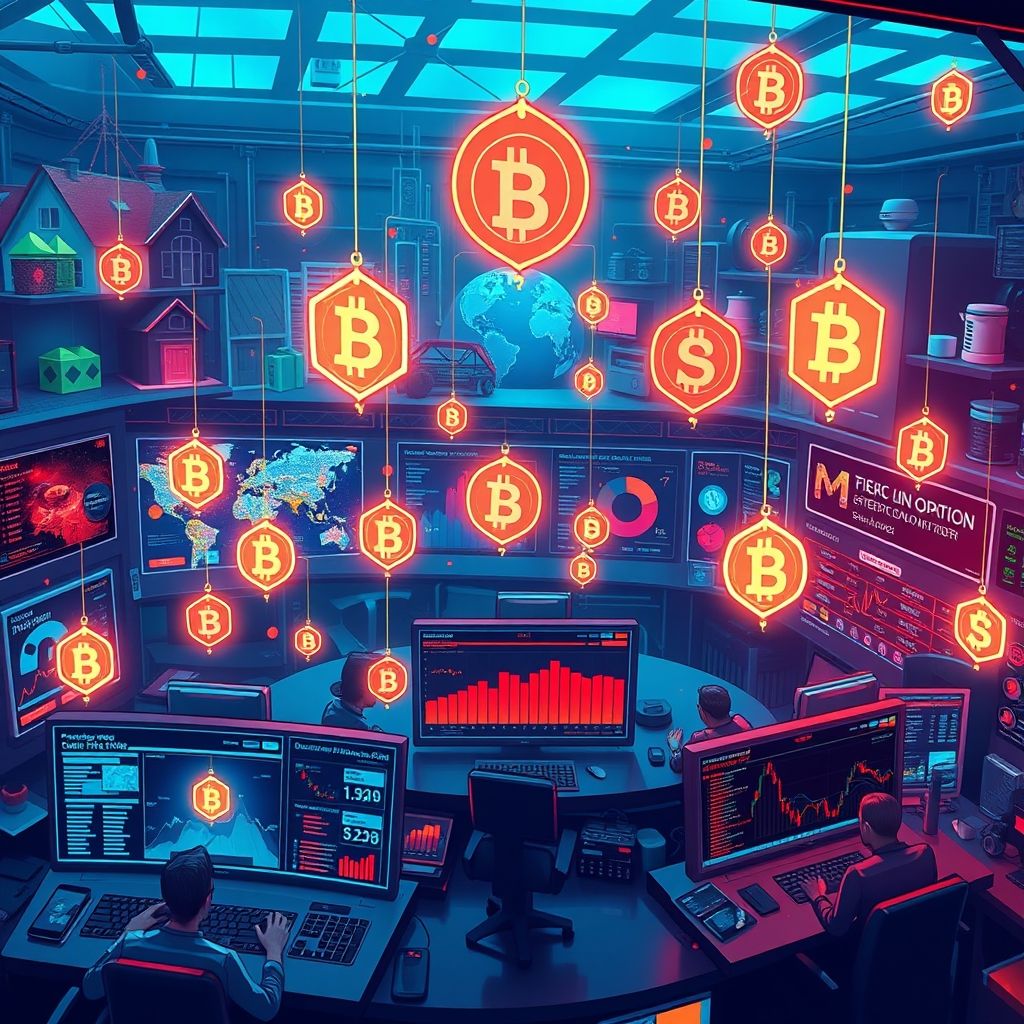How does tokenized asset trading work?
How Does Tokenized Asset Trading Work?
Imagine a world where buying and selling assets is as easy as clicking a button on your phone—no matter if it’s stocks, real estate, commodities, or even exotic assets like artwork. That’s the promise of tokenized asset trading, a game-changer in the evolving landscape of Web3 finance. Curious how this all works behind the scenes? Let’s break down the basics and see what makes it so compelling.

What is Tokenized Asset Trading Anyway?
At its core, tokenized asset trading involves converting traditional assets into digital tokens that run on blockchain platforms. Think of it as turning a physical asset—like a downtown apartment or a barrel of oil—into a blockchain “stick of currency” that can be traded seamlessly, securely, and instantly. Thanks to this, investors can access a broader universe of assets with fractional ownership, enabling lower barriers and more liquidity.
How Does It Actually Work?
The Tokenization Process
The journey begins with asset tokenization—an issuing process where an asset is represented by digital tokens. For example, a real estate company might tokenize a property worth $10 million by creating 10 million tokens, each representing a tiny ownership share. These tokens are stored and managed via smart contracts, which are self-executing agreements with coded rules.
Once tokens are issued, they can be listed on specialized exchanges—decentralized or centralized—that support token trading. Investors can buy, sell, or hold these tokens as easily as trading stocks on Wall Street but with added flexibility. Transactions are recorded immutably on the blockchain, ensuring transparency and reducing the chance of fraud.
Decentralized Exchanges and Liquidity Pools
Decentralized finance (DeFi) platforms offer a way to trade tokens directly peer-to-peer without middlemen. Liquidity pools—collections of tokens supplied by users—allow for smooth, 24/7 trading. Unlike traditional markets, these pools increase liquidity across various assets, from fiat-pegged stablecoins to high-risk tokens, giving traders more options at different risk levels.
Why It’s Changing the Game
Accessibility and Fractional Ownership
Tokenization shatters the old myth that high-value assets are out of reach for most. Want to invest in a $2 million artwork or a commercial real estate property? Just buy a fraction. This opens doors not only for wealthy investors but for everyday folks to diversify portfolios with assets previously considered out of reach.
Efficiency and Speed
Traditional asset trading can sometimes take days or weeks, especially when converting between currencies or completing cross-border transactions. With tokenized assets on blockchain, settlements can happen in minutes or seconds—think of it like instant bank transfers, but for a diverse universe of assets.
Increased Liquidity
Tokenized markets create more opportunities for trading assets that normally move slowly—like art or real estate—by breaking them into smaller, tradable units. This not only helps investors exit positions faster but also fosters a more active, dynamic market.
Security and Transparency
Blockchains are built around the principle of transparency—every trade, ownership change, or asset transfer is recorded in a public ledger. Plus, smart contract automation minimizes human error and reduces fraud risk.
Navigating the Challenges
Of course, this new frontier isn’t without hurdles. Regulatory hurdles remain a big question mark—laws vary globally and are still catching up with the tech. Theres also the need for robust security protocols—since digital assets are attractive targets for cyber threats. Plus, understanding the nuances of leverage and margin trading in these markets requires a careful approach, as volatility can be amplified in such environments.
The Future: Smarter, Faster, Decentralized
Looking ahead, innovative approaches like AI-driven trading systems and smart contract automation will push tokenized asset trading even further. Imagine AI algorithms that analyze market trends across a spectrum of tokenized assets in real-time, offering personalized, data-driven insights. As the decentralized finance ecosystem matures, the trust and security protocols will only improve.
Decentralization will continue to disrupt traditional finance, making markets more open and democratic. Yet, we’ll need to stay alert—regulatory developments, security concerns, and technical innovations will shape its evolution.
Why It’s Just Getting Started
Tokenized asset trading is more than a buzzword—its a glimpse into a future where assets are more accessible, markets more efficient, and transactions more transparent. Whether you’re thinking of hedging your investments, diversifying your portfolio, or simply exploring how blockchain can redefine finance, this wave is set to transform how we trade, invest, and think about value itself.
And remember: In this new era of finance, embracing the tech means riding the wave of innovation—fast, secure, and borderless. Ready to explore the tokenized world? Let’s get started!